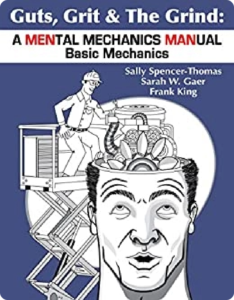Tom had always considered himself a good boss. He ran a mid-sized manufacturing company that prided itself on a close-knit team and a culture of hard work. Birthdays were celebrated, milestones acknowledged, and Tom liked to think he knew his employees well. But one Monday morning, Tom received news that would shatter his world and change his understanding of leadership forever: Dave, a longtime employee, had died by suicide over the weekend.
The shock rippled through the company like a silent earthquake. Some employees wept openly; others grew quiet and withdrawn. Rumors and questions swirled—“Did anyone know he was struggling?” “Could we have done something?” Tom himself felt lost, unsure how to lead his team through such a tragedy. His first instinct was to keep things quiet, hoping to avoid discomfort or gossip. But as he watched his staff struggle with shock, guilt, and grief, Tom realized that silence only deepened the pain and stigma.
He knew he had to do something different. He reached out to a trusted HR consultant and learned about the concept of “postvention”—the actions taken after a suicide to support those affected and prevent further harm. Tom quickly gathered his leadership team, and together, they made a plan that would become a turning point for the entire company.
Acknowledge the Loss Openly and Compassionately
The first step was to address the loss head-on. Tom called a company-wide meeting. With a heavy heart, he spoke honestly with the staff, naming the tragedy, expressing his own sadness, and acknowledging the shock everyone felt. He invited employees to support each other, to share memories of Dave, and to reach out if they needed help. For many, it was the first time they’d seen their boss so vulnerable. Tom’s openness set the tone for honest conversation and began to break the silence that often surrounds suicide.
Offer Practical Help to the Bereaved
Tom and his team knew that actions spoke louder than words. They organized meals for Dave’s family, sent flowers, and ensured that coworkers who were close to him had flexible time off to grieve. They also provided information about local support groups and made sure everyone knew about the company’s Employee Assistance Program (EAP). By offering practical help, Tom showed his employees that their well-being mattered—not just as workers, but as people.
Bring Mental Health Resources to Employees
Recognizing that the trauma of losing a colleague could linger, Tom invited a licensed counselor to lead a critical incident debriefing session. This gave employees a safe space to talk about their feelings and ask questions. The counselor also provided guidance on recognizing signs of distress in themselves and others, and offered strategies for coping with grief. Tom made it clear that seeking help was not only acceptable, but encouraged.
Restore Balance and Honor the Person Who Died
To help the team process their loss, Tom organized a memorial service at the company. Employees shared stories about Dave—his infectious laugh, his dedication to his work, the time he stayed late to help a new hire. They created a memory wall, where people could post notes, photos, and drawings. This act of remembrance allowed employees to honor their colleague, find meaning in their grief, and begin to restore a sense of balance in the workplace.
Train the Team on Postvention and Prevention
Tom realized that addressing the aftermath was only part of the solution. He wanted to ensure that his company would be better prepared in the future—not just to respond to tragedy, but to prevent it. He arranged for suicide prevention and postvention training for all staff. Employees learned how to spot warning signs of depression and suicide, how to start difficult conversations, and what resources were available for those in need. They also discussed how to build a workplace culture that prioritized mental health and reduced stigma.
Key Lessons and Lasting Change
Through these steps, Tom’s company slowly began to heal. The tragedy became a catalyst for lasting change:
Employees felt safer discussing mental health.
Conversations that once felt taboo became part of the workplace culture. People checked in on each other more often, and managers received additional training on supporting mental wellness.
Stigma decreased, and more people accessed support.
Utilization of the EAP increased, and employees reported feeling less alone in their struggles. The company began offering regular mental health workshops and brought in guest speakers to keep the conversation going.
The workplace culture shifted toward compassion and resilience.
Team members became more attuned to each other’s well-being. The company adopted new policies for flexible work, stress management, and peer support. They even formed a wellness committee to keep mental health initiatives front and center.
Tom learned that real leadership meant not just preventing tragedy, but knowing how to respond with empathy and action when it happened. By embracing postvention, he helped his company move from crisis to community—and from silence to hope.
The Takeaway
Tom’s story is a reminder that suicide postvention isn’t just about managing a crisis—it’s about transforming workplace culture. By acknowledging loss, offering support, bringing in resources, and prioritizing ongoing education, leaders can turn tragedy into an opportunity for growth and healing. Tom’s company emerged stronger, more connected, and better equipped to face whatever challenges the future might bring. In choosing compassion, Tom not only honored Dave’s memory but also laid the foundation for a healthier, more resilient workplace for everyone.
Make a Quick Call

